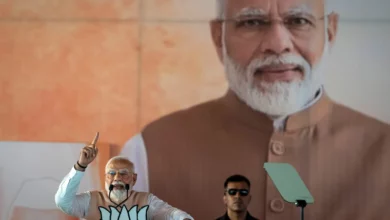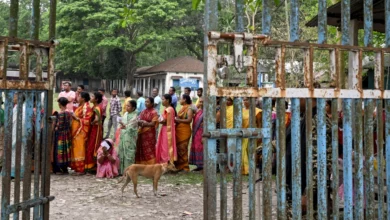
Less than 48 hours after the devastating crash in eastern Odisha state, which left at least 275 dead and more than 1,000 injured, officials were rushing to resume rail services, with scores of workers toiling away in heat over 95 degrees Fahrenheit to get the tracks back online. With the rail routes still blocked, family members of deceased passengers had to find their way by other means to claim their loved ones.
At the site of the wreck, in the midst of farm fields, belongings of the many people who were on board the passenger trains when they collided with a freight train were still strewn across the ground. Suitcases, bags, shoes and personal items lined the tracks. Crushed rail carriages were rolled in a ditch, some lying on their side.
Deepak Behera, 37, had been playing football in the nearby town of Bahanaga within earshot of the crash on Friday evening. “For a moment we thought it was an earthquake,” he said.
Behera and other local residents rushed to the crash site to find hundreds of passengers packed into the overturned carriages in total darkness, desperately trying to find a way out. They used the flashlights on their mobile phones and began searching for survivors.
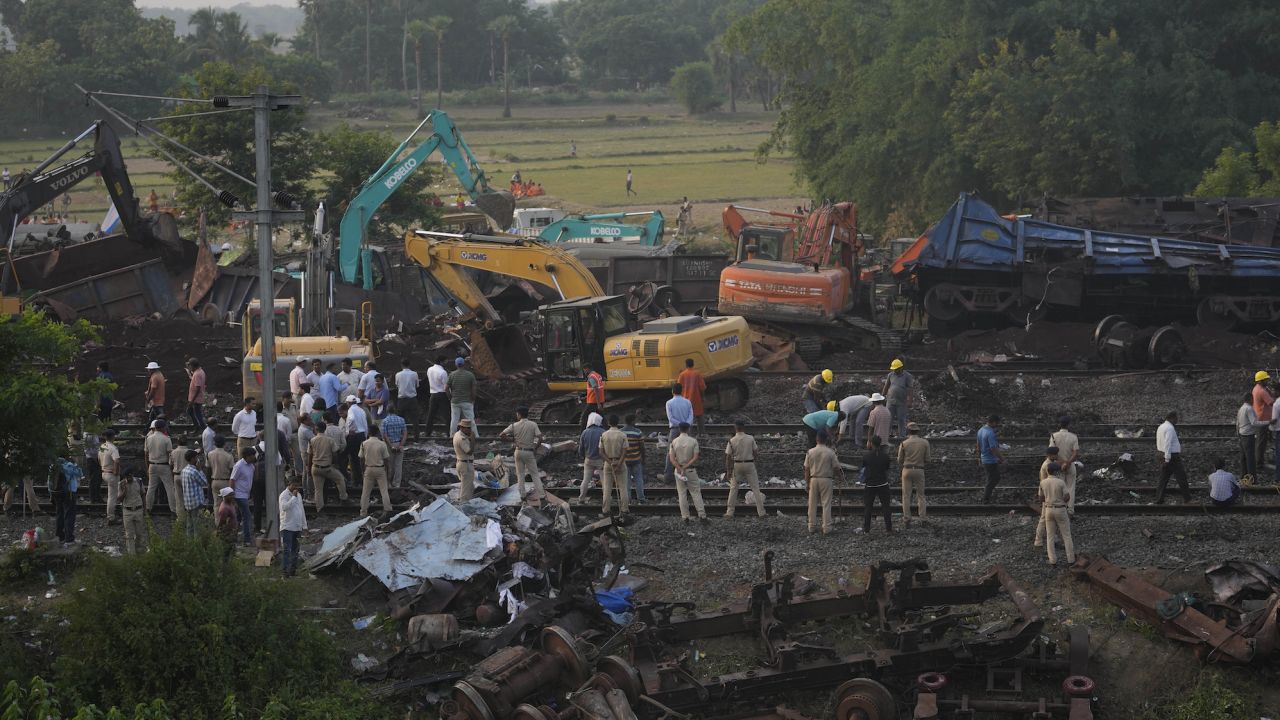
“We found a lot of screaming and crying sounds. The carriages were so badly turned and crashed that nobody was capable of getting out,” Behera said, adding that he pulled 28 people alive from the carriages, as well as countless who had died.
Many of the bodies were still unidentified on Sunday. In a sign of the chaos at the site, the death toll was revised down from at least 288 after officials said some of the bodies at the scene had been counted twice.
A survivor of the disaster, Anshuman Purohit, described a scene of horror – train carriages stacked on top of each other two or three story’s high, passengers crushed by the wreckage, blood everywhere.
“When we opened the door, that’s when I actually heard the wail of humanity, crying out in pain crying out for water and crying out for help,” Purohi, who was in first-class and seated towards the end of the train, said.
“There were lots of bodies with unimaginable injuries. I saw a head without a body, I saw skulls crushed in, I saw bodies completely crushed by the metal of the train… it was horrifying.”
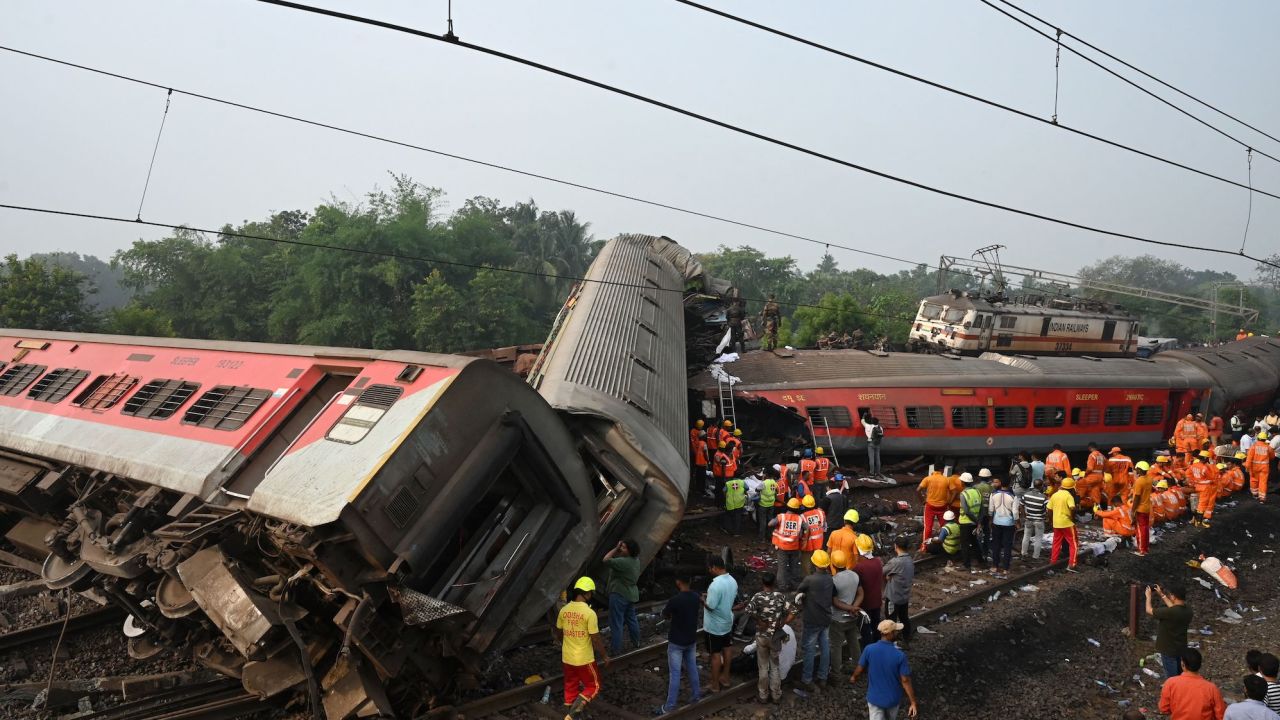
Anger is growing over the deadly accident across India, now the world’s most populous nation, renewing calls for authorities to confront safety issues in a railway system that transports more than 13 million passengers every day. While the government has recently poured millions into upgrading the system, years of neglect has left tracks to deteriorate.
India’s railways minister, Ashwini Vaishnaw, said on Sunday that the accident had occurred “due to a change in electronic interlocking” and that an investigation would show “who was responsible for that mistake.”
“The cause has been identified and the people responsible for it have been identified,” he told Indian news agency ANI, declining to give further details until the government report was released.
According to senior railway officials, the Coromandel Express, a high-speed train that was traveling from Kolkata to Chennai, was diverted onto a loop line and slammed into a heavy goods train idled at Bahanaga Bazar railway station. Its carriages derailed onto the opposite track, where they were hit by an oncoming high speed train, the Howrah Express, which was traveling from Bangalore.
Jaya Varma Sinha, an Indian railways ministry official, said on Sunday that the high speed of the Coromandel Express colliding into the goods train, which was carrying iron ore, had contributed to the huge number of casualties and injuries.
“The impact was high as the train was moving at full speed, 128 kmph [79.5mph], and the other issue here is that it was a goods train carrying iron ore, which is a heavy train so the entire impact of the collision was felt on the moving train,” Sinha said.
She added that the other passenger train was also moving at a very high speed, 126 kmph [78.2mph], and that in the last fraction of a second it came into the path of the other derailed coaches.
Hopes have faded that any more survivors will be found, with authorities on Sunday switching their focus from searching for people stuck under overturned carriages to clearing the wreckage. All 21 coaches which were derailed have been moved and the rest of the site is being repaired so that services can start again.
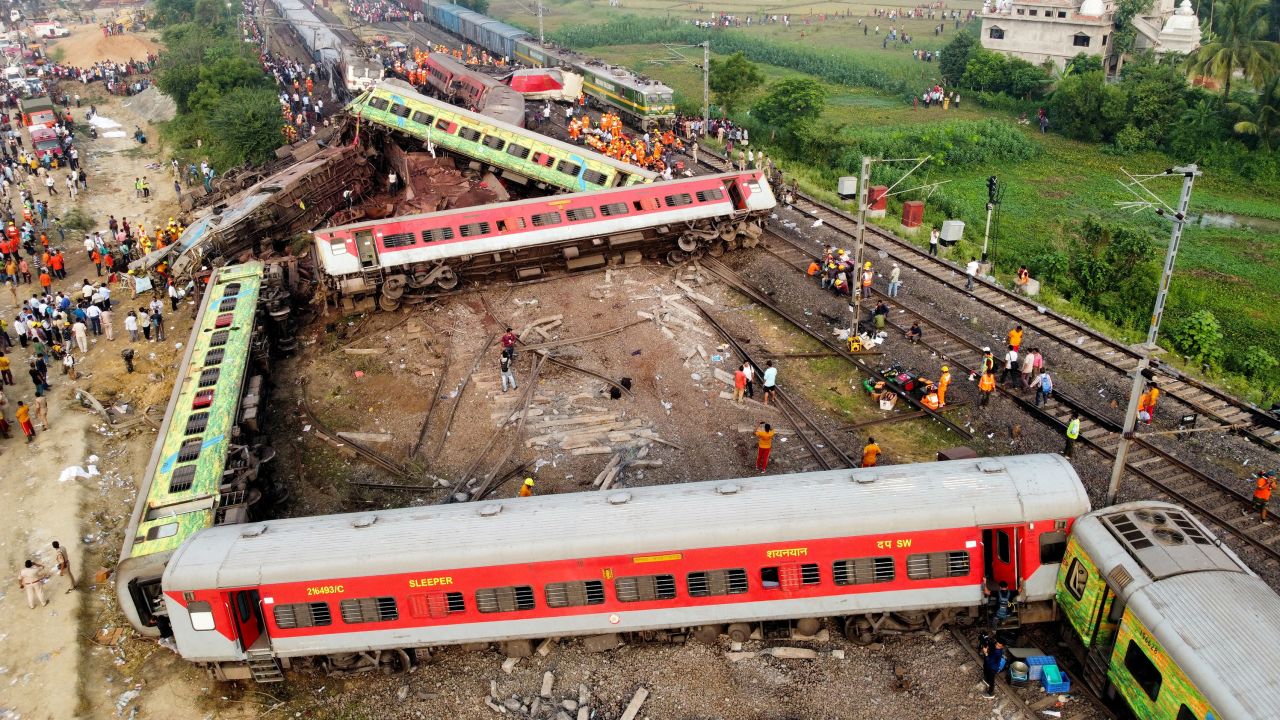
Hundreds of workers, many of them working by hand with picks and shovels, were toiling in the heat and humidity on Sunday to fix the tracks. Seven excavating machines, two accident relief trains and four railway and road cranes have been deployed to the site, India’s railway ministry said.
Vaishnaw, the railways minister, who is facing calls from opposition politicians to resign, said the aim was to have a “complete, normal-like situation by Wednesday morning,” adding, “we have mobilized lots of resources.”
The number of injured remains at over 1,000 people, and over 100 patients need critical care, according to Mansukh Mandaviya, India’s health minister, who arrived in Odisha state on Sunday morning. Expert doctors, specialized equipment, and medication have been flown in from the Indian capital, New Delhi, Mandaviya added.
Odisha’s chief minister, Naveen Patnaik, on Sunday announced 500,000 rupees ($6,067) in compensation for the next of kin of those who died and 100,000 rupees ($1,213) for people who sustained serious injuries.
Patnaik said “all possible steps have been taken to save the lives of injured passengers in different hospitals,” according to a statement issued by Odisha’s Information and Public Relations Department.
The state authorities said a special train service will run on Sunday to transport survivors and dead bodies out of Odisha. It will run to Chennai, in the southern Tamil Nadu state, and stop at all major stations, with a parcel carriage attached to carry bodies of the deceased.
Indian Prime Minister Narenda Modi, who visited the site, hailed local authorities and rescuers for their work. He has also emphasized that those to blame for the accident will be brought to justice.
“We can’t bring back those we have lost but the government is with them (families) in their grief. This incident is very serious for the government … Whoever is found guilty will be punished severely,” Modi said on Saturday, adding that the government would “leave no stone unturned.”
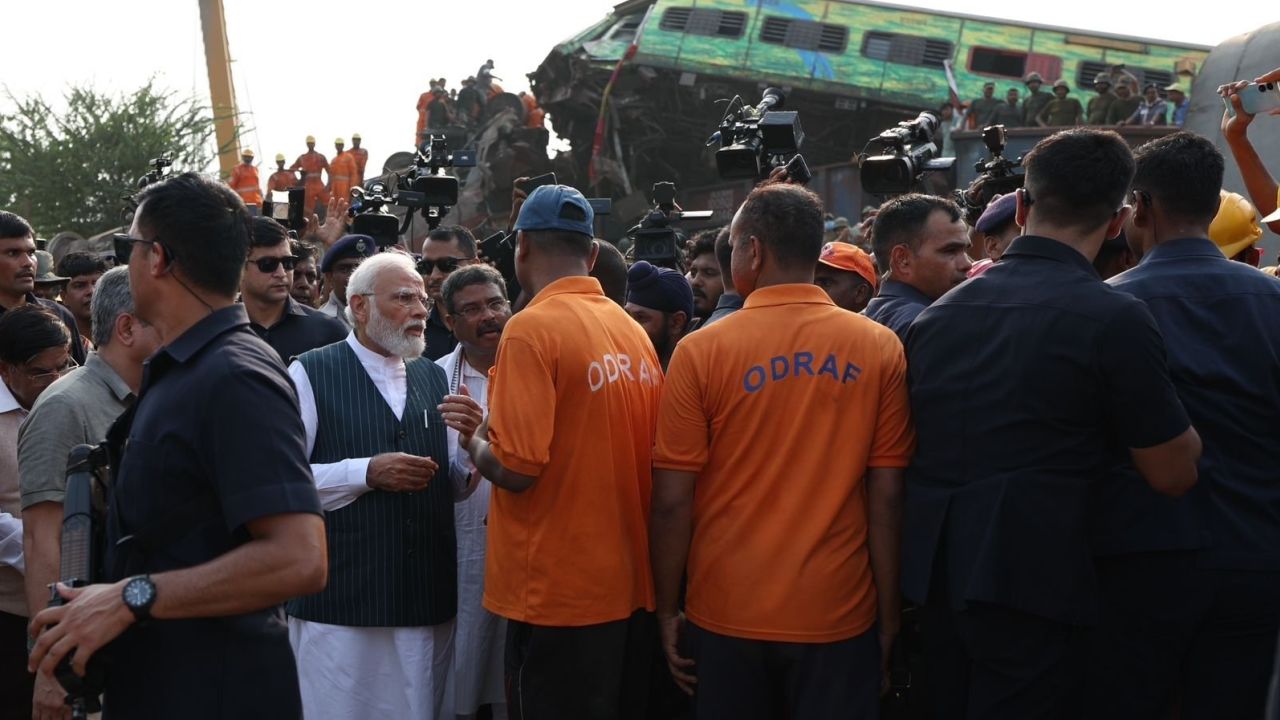
The train crash has raised questions over the safety of the country’s massive and outdated rail network, as the government invests in its modernization.
India’s extensive rail network, one of the largest in the world, was built more than 160 years ago under British colonial rule. Today, it runs about 11,000 trains every day over 67,000 miles of tracks in the world’s most populous nation.
Decaying infrastructure is often cited as a cause for traffic delays and numerous train accidents in India. Though government statistics show that accidents and derailments have been on the decline in recent years, they are still tragically common.
More than 16,000 people were killed in nearly 18,000 railway accidents across the country in 2021. According to the National Crime Records, most railway accidents – 67.7% – were due to falls from trains and collisions between trains and people on the track. Train-on-train collisions are less common.
In 2005, at least 102 people died when a passenger train derailed in the southern state of Andhra Pradesh as it tried to cross tracks washed away by a flood. In 2011, scores were killed when a train jumped tracks in the northern state of Uttar Pradesh.
The death toll from Friday’s crash has already surpassed that of another infamous incident in 2016, when more than 140 people were killed in a derailment in northern Uttar Pradesh state. The same year, Modi announced huge investments in India’s railway system aimed at improving safety and connectivity.
In February, Modi inaugurated the first section of a 1,386-kilometer (861-mile) expressway linking the capital New Delhi to the financial hub of Mumbai. Construction is also underway for the Western Dedicated Freight Corridor, which aims to decongest India’s railway network. Later this year, the country will open Chenab Bridge – the world’s tallest railway bridge – in the country’s Jammu and Kashmir region.
Upgrading India’s transportation infrastructure is a key priority for Modi in his push to create a $5 trillion economy by 2025. For the fiscal year that started in April, Modi’s government raised capital spending on airports, road and highway construction and other infrastructure projects to $122 billion, or 1.7% of its GDP.
A significant portion of that spending is targeted at introducing more high-speed trains to its notoriously slow railways.
Several major projects have just finished, or are close to completion, including the construction of the world’s tallest railway bridge in the Jammu and Kashmir region.
Modi had been set to inaugurate a new high-speed train, the Vande Bharat Express, on Saturday before the accident happened.
This story has been updated to clarify that Deepak Behera was in Bahanaga, the nearest town to the crash site.
CNN’s Michael Holmes, Sania Farooqui, Manveena Suri, Chris Lau and Allegra Goodwin contributed to this report.

